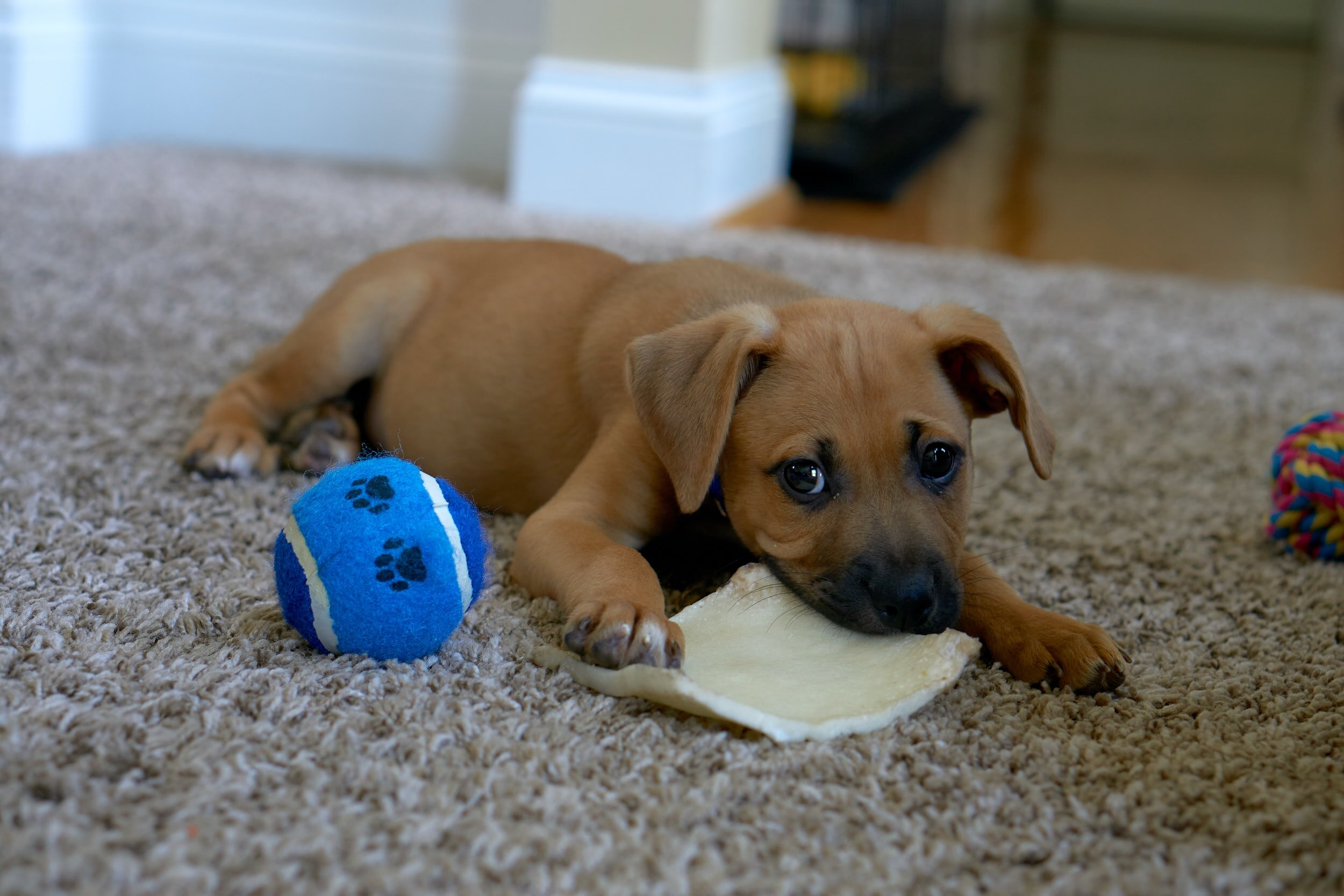Good Toys For Dogs (And What to Avoid)
Just like humans, dogs need to have fun too! Having a selection of toys available to your dog is a great way to provide enrichment and decrease boredom. Unfortunately, not all toys are created equal and some might be dangerous for your pet to play with.
What Does a Good Toy for Your Dog Look Like?
Understanding a basic set of guidelines will help you determine if a toy is safe or not, regardless of what type of toy it is.
Start by picking a toy that is appropriate for their size. Most toys come in different sizes and are labeled accordingly on the package. If it’s too small, it could pose a choking hazard or be accidentally swallowed.
Make sure the material of the toy is soft enough to avoid damage to your dog's teeth. A good way to test this is by bending the toy or pushing the edge of your fingernail in it. If it’s too hard to bend or too hard for your fingernail to leave an indention, it’s too hard for your dog's teeth.
Stay away from toys with fillings, strings, ribbons, and small inner parts as these can all pose a choking risk or be ingested and cause digestive issues and blockages.
If you have a puppy, look for puppy-specific toys designed to be even more gentle on their developing teeth.
Recommendations
Any toy or treat labeled with the VOHC (Veterinary Oral Health Council) seal of approval is an excellent choice for your pup. This label ensures that the toy or treat in question has been proven to be digestible and beneficial to dental health.
Kong toys or similar hard rubber toys are soft enough to protect your dog's teeth but strong enough to not break into small pieces and become a choking hazard. Many of these toys also let you put treats inside such as kibble or peanut butter. These food toys are a great way to stimulate your dog's brain and keep them happy and healthy. NOTE: if you use peanut butter, avoid brands that list xylitol as an ingredient as this is toxic to dogs. If your dog is overweight or has other medical issues, talk to your vet about what edible treats would best suit your pup.
Snuffle mats are another toy to use in conjunction with food that provides a way for your dog to use its natural sniffing talents to find treats hidden in its layers of fabric.
Fabric toys are good for the less aggressive chewers, as long as there isn’t stuffing or filling inside. Always supervise your dog and remove the toy if it becomes too frayed to safely play with.
Tennis balls and other fetch balls are good toys for your dog to play fetch with. These are not appropriate for chewing though. Owners with large breed dogs should be extra careful as these can pose a choking hazard.
Toys To Avoid
You might be surprised to see a decent amount of popular dog toys on the “avoid” list. These toys have the possibility to cause tooth damage, foreign body obstructions, choking, and hard palate injury (top of your dog’s mouth.)
Antlers have become very popular as a “natural” alternative to other chews, but they’re too hard for a dog to safely chew. Owners have seen cracked teeth within just a few hours of giving their dog an antler.
Pig ears, rawhide, and bully sticks are toys made from by-products of livestock. There have been numerous cases of bacteria such as e.coli and salmonella found thriving on these types of chews. They also cause digestive upset when ingested and are a choking hazard if pieces are chewed off.
Hard plastic or nylon bones are (you guessed it) way too hard for your dog's teeth. Aggressive chewers can actually break off small bits of plastic, which can cause damage to the mouth, throat, stomach, and intestines, as well as obstructions.
As you can see, there are many good toys for dogs... and just as many bad ones. If you have any questions about whether a toy is safe or not, always check with your vet.

